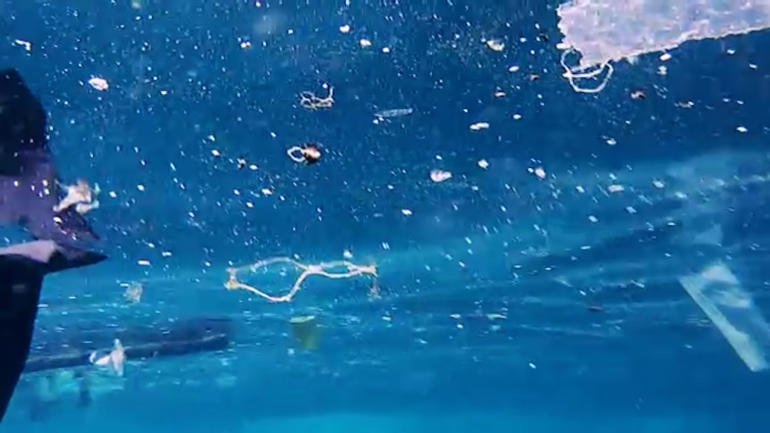Laundry can spill plastics into the ocean and rivers. How does it happen?
With each load of laundry in a washing machine, millions of microfibers come off our clothes.
They are tiny strands of plastics, almost invisible to the naked eye.
They mainly come from synthetic fabrics like polyester, fleece, rayon, and nylon.
U.S. scientists estimate that 2.9 million tonnes of microfibers have been emitted from a combination of hand and machine washing between 1950 and 2016.
Even though some fibers can be removed by wastewater treatment systems, over half of them ended up in the rivers and ocean. That’s equivalent of seven billion fleece jackets, scientists say.
Are microfibers harmful?
Microfibers from synthetic fabrics cannot biodegrade and have posed serious threats to aquatic animals.
“We’re finding them in all marine life. Everything from plankton through to whales really there’s evidence of plastics and harm associated with these plastics. So its cause for concern. There’s chemicals associated with these plastics and it’s not just the physical blockage but it’s the chemical toxicity that is an issue,” Scott Wilson, Research Director of Australian Microplastic Assessment Project emphasized.
When fish eat the plastic fibers, the plastic stays in their stomachs and makes them feel full. The fish will eventually starve to death due to lack of real food. Fibers also bring chemicals attached on them to the fish. When we eat fish, the chemicals and fibers will end up in us.
What can you do to help reduce microfibers?
Global textile industry produces more than 40 million tons of synthetic fabrics each year and the majority of them are for polyester clothing, that’s according to Max Kelly, who researches marine biotechnology at the Newcastle University. He points out that making those fabrics is the root of the problem.
“Large-scale removal of microfibers from the environment is unlikely to be technically feasible or economically viable, so the focus needs to be on emission prevention,” Jenna Gavigan, researcher from Bren School of Environmental Science and Management at the University of California, Santa Barbara, emphasized.
To reduce microfiber pollution in rivers and seas requires improvements in various areas including textile manufacturing processes, washing machine appliance design, laundry detergent and wastewater treatment.
Here are some actions consumers can take to help reduce microfiber pollution:
- Avoid delicate cycles.
A recent study shows that dedicate wash cycles create 800,000 more microfibers than other wash settings.
- Use cold and faster wash cycles.
Fiber loss could be decreased by nearly 30 percent if consumers used a half-hour wash cycle at 86 degrees Fahrenheit compared to the standard 85-minute cycle with a water temperature at 104 degrees Fahrenheit, researchers from Northumbria University say.
- Wash larger loads of laundry.
- Use high efficiency washing machines.
- Buy less new clothing.
Research suggests new clothes shed much more microfibers than older clothes during laundry, particularly during the first eight weeks.
 CGTN America
CGTN America
